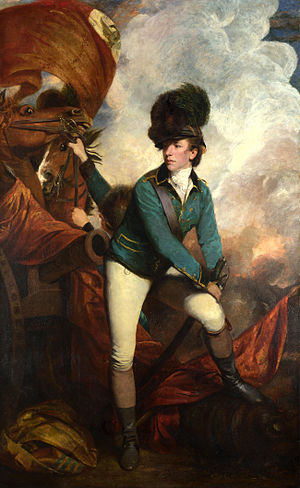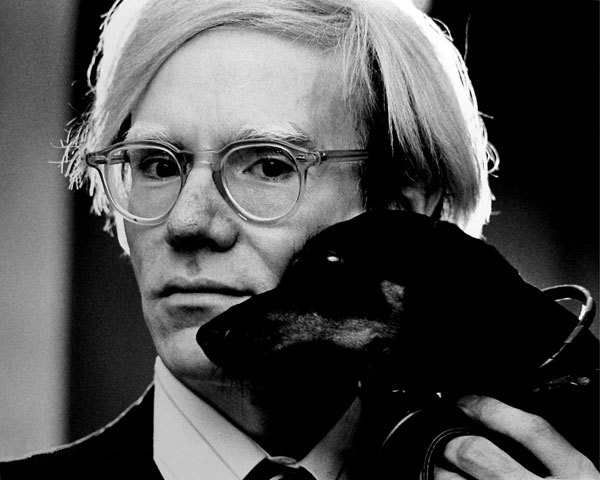The Midnight Ride of Jack Jouett, 1781
 | ||
| Silhouette of Jouett made by his son. |
Jack Jouett was already a hero. He had served as Captain in the 16th regiment during the Revolutionary War. He and his father had both signed the Albemarle Declaration, a renunciation of King George by the residents of Albemarle County. Jouett's father supplied meat for the army, and all of his brothers had participated in the Revolution, too.
Jouett was asleep on the lawn of the Cuckoo Tavern on the night of June 3rd, 1781, when he heard cavalry approaching. It was Lieutenant Colonel Banastre Tarleton, leading a company of 180 cavalry and 70 mounted infantry, on their way to Charlottesville, Virginia to arrest the Virginia government. The government had fled to Charlottesville after the attack on Richmond, and the British were hoping to capture Thomas Jefferson, Patrick Henry, Richard Henry Lee, and other notable leaders.
Jouett figured out pretty quickly where the British were headed, and he knew that Jefferson and the other patriots were undefended -- there hadn't been much fighting in Virginia, and most of the troops were deployed elsewhere. Charlottesville was about 40 miles away, so Jouett quickly saddled up and went to warn them. The British were on the main highway, so he took the back roads.
 |
| Lieutenant Colonel Tarleton |
Meanwhile, Jouett reached Monticello at about 4:30 am. Jefferson, an early riser, was already in the gardens. Jouett warned him that the British were coming for him, and then went on to warn other patriots in the town.
Jefferson had a leisurely breakfast with his guests, and then started packing up his papers. Two hours later, another man rode up to warn him that the British were on their way. At this point, Jefferson sent his family to another plantation, and ordered a horse to be saddled and ready at the door. He kept watch with a spyglass, but by the time he saw the British, they were already on his lawn. Quickly riding away, he escaped his would-be captors in the woods.
 |
| John Walker served breakfast. |
General Edward Stevens, one of the men staying at the inn, had recently been wounded in battle, and could not ride very well. Jouett rode with him, and when they were apprehended, the British, misled by Jouett's fancy military dress (he was somewhat of a dandy), took him for Stevens, and let the more shabbily-dressed man escape.
On June 15th, the Virginia legislature voted to honor Jouett with a pair of pistols and a sword, in thanks for his help. Two years later, he received the pistols. It was another 18 years before he got the sword.
Attempted Murder of Andy Warhol, 1968
 |
| Andy Warhol © Jack Mitchell/Wikimedia Commons |
Solanas received a bachelor degree in psychology and began graduate studies. Her activities are largely unknown until 1966, when she surfaced in Greenwich Village.
Solanas met Andy Warhol in 1967, outside his studio. She had written a play that she wanted him to produce, and he agreed to read it. According to friends, Warhol found the play so pornographic that he thought it must be a police trap. When he turned it down, Solanas demanded its return, and, when Warhol said that it had been lost, she demanded payment instead.
Warhol didn't pay her for the lost play, but he did give her a role in one of his. He found her interesting and funny -- at least until she made herself obnoxious. The play apparently really was lost, and it was only found after his death, in the bottom of a trunk of lighting equipment.
On June 3rd, 1968, Solanas was waiting for Warhol in the lobby of his studio. She shot him three times, hitting him in the spleen, stomach, liver, lungs, and esophagus. She also shot the art critic, Mario Amaya, who was accompanying Warhol, and attempted to shoot Warhol's manager, Fred Hughes. Hughes escaped when her gun jammed.
Solanas turned herself in the same day. She said that she had shot Warhol because he had "too much control over [her]." She received a three-year term in a psychiatric hospital.
Warhol was never quite the same. He had barely survived the attack, and he feared Solanas would come after him again. According to friends, he would start whenever someone laid a hand on him.
When questioned by the media about her motives, Solanas referred them to her SCUM Manifesto, a 21-page document she had written, advocating a manless society. The mimeographed document sold for one dollar to men, or 25 cents to women.
No comments:
Post a Comment